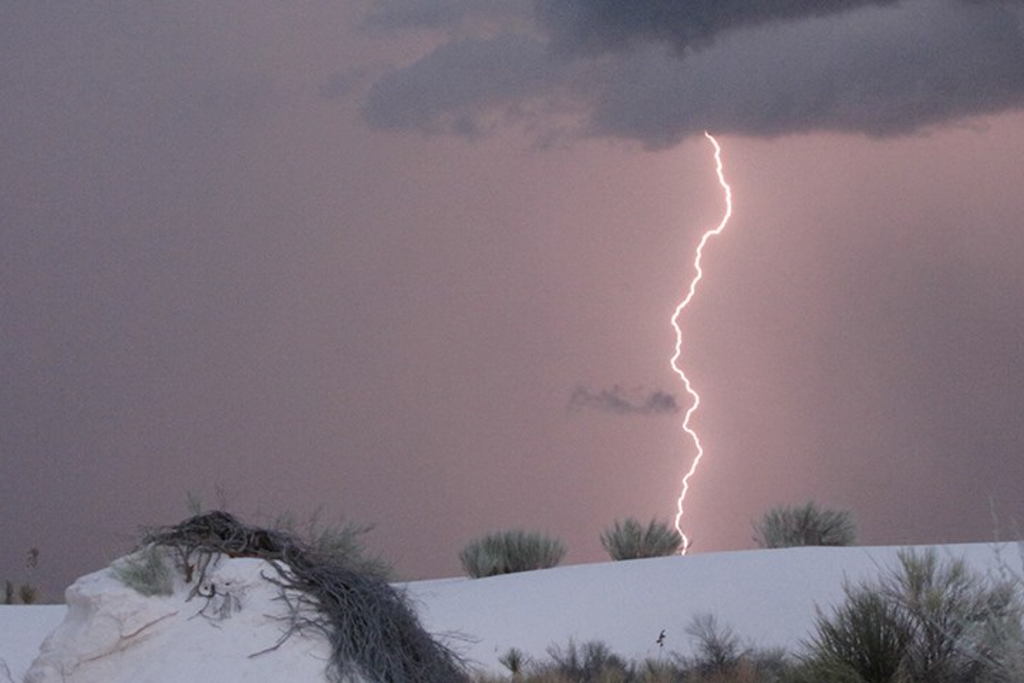
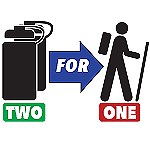
Bring plenty of food and water
You will need more water than you think. Sweat evaporates quickly. Your body loses water rapidly in the desert. Always carry extra water with you. When your water is half-gone, return to your car.One gallon (4 Liters) of water per person per day is recommended, as well as high-energy snacks such as fruit, nuts, and energy bars. Fill up water containers at the visitor center. There is no water available in the dunefield.
In addition, it is important to balance food intake with fluid consumption, lest you run the risk of becoming dangerously debilitated and severely ill. Hyponatremia may occur when a person drinks too much water without replenishing electrolytes or eating salts. If a member of your party begins to experience nausea, muscle cramps, or disorientation, yet they are well hydrated, they may need salt. Crackers, pretzels, and sports drinks should be consumed to keep up sodium levels in the body.
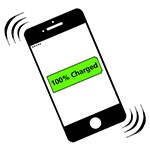
Bring a fully charged cell phone
Start your day with a fully-charged cell phone. Bring a portable charger if you have one. There are no outlets for charging cell phones at the park. Turn your cell phone off or put in airplane mode while walking in the dunes. Conserving your battery for emergencies could mean the difference between life or death.
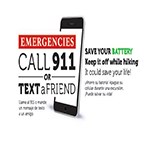
In an Emergency Call 911
Data and cellular signal strength can vary drastically throughout the park. Sometimes you can text when you are unable to make a call. In an emergency situation with limited cell reception, text a friend and have him call 911 for you. You may not be able to call 911 if you are using a cell phone from outside the United Sates. Consult your mobile service provider for instructions on how to access emergency services with your device prior to venturing out into the dunes.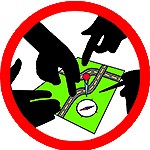
Have a Plan and Share It
Tell someone who is not in your party where you are going and when you will return. Know the weather forecast and what time the sun sets. Be prepared for the weather and ensure you have enough time to complete your hike.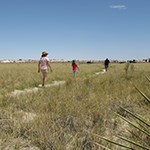
Hike with Friends
It is not recommended to hike alone. Always keep your children in sight. Children can wander, and separating from your companions can mean getting lost.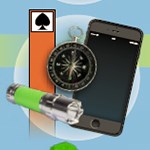
Know Where You Are
It is easy to become disoriented in the dunefield. Wind moves sand and erases your tracks. GPS can be unreliable. While hiking, pay attention to and follow trail posts, each marked with a specific color and symbol. Knowing the trail markers is critical if you become lost. Look carefully for the next trail marker before continuing. If you cannot see the next marker, do not continue, turn around and return to your car. Plan your hike so that you are back at the trailhead before sunset.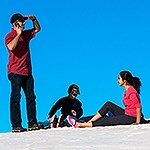
Do Not Wander if Lost
Carry a park map and compass and keep landmarks, such as water towers, in view. If you become lost, stop and sit on top of a dune. Wandering can endanger your life and make finding you more difficult. Use a mirror or piece of aluminum foil to flash sunlight towards potential rescuers. Call 911.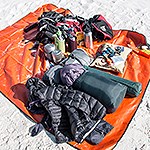
Be Prepared
The sun reflecting off the white sand is intense year round and can cause severe sunburns. Wear a hat, sunscreen with an SPF of 15 or higher, and sunglasses. Apply sunscreen to all exposed areas, even in winter. Wear clothing that is appropriate for the day’s weather: loose, light-colored clothing during warmer months, and warm clothing during cooler seasons. Remember that temperatures can drop drastically after sunset – anywhere from 20 to 30 degrees.In addition, take the park map, a flashlight and extra batteries, a whistle, a signal mirror, a first-aid kit, and extra clothes that can be layered for varying weather.
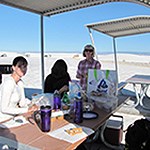
Rest Often
Heat illness can occur fast. Take frequent breaks in the shade. There are picnic areas with sheltered tables along Dunes Drive. You can also bring your own sun shelter or sun umbrella. Exposure to full sunshine can increase heat index values by up to 15°F (9°C). The sun’s UV rays are the strongest at midday. Plan your visit for early morning or late afternoon when the sun is lower.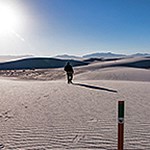
Know Your Limits
Altitude
The elevation at White Sands is 4,235 feet (1,291 m). This may have an effect on those traveling from lower elevations. Allow time for your body to acclimate by adjusting your activity level. Take frequent breaks and drink water. Common symptoms of altitude sickness include headache and loss of appetite. Pace yourself and pay attention to how you are feeling.Is there something we missed for this itinerary?
Itineraries across USA

Acadia

Arches National Park

Badlands

Big Bend

Biscayne

Black Canyon Of The Gunnison

Bryce Canyon

Canyonlands

Capitol Reef

Carlsbad Caverns

Channel Islands

Congaree

Crater Lake

Cuyahoga Valley

Death Valley

Dry Tortugas

Everglades

Gateway Arch

Glacier

Grand Canyon

Grand Teton

Great Basin

Great Smoky Mountains

Guadalupe Mountains

Haleakalā

Hawaiʻi Volcanoes

Hot Springs

Indiana Dunes

Isle Royale

Joshua Tree

Kenai Fjords

Kobuk Valley

Lassen Volcanic

Mammoth Cave

Mesa Verde

Mount Rainier

North Cascades

Olympic

Petrified Forest

Pinnacles

Rocky Mountain

Saguaro

Shenandoah

Theodore Roosevelt

Virgin Islands

Voyageurs

White Sands

Wind Cave

Yellowstone

Yosemite

Zion